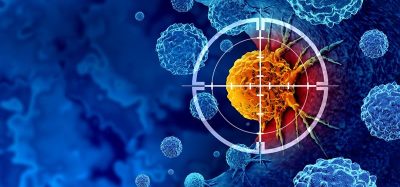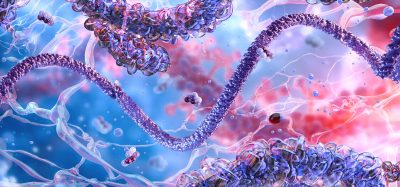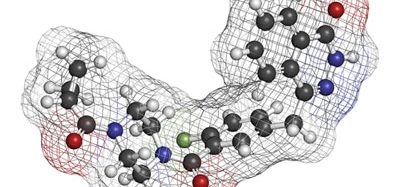Could scratching nerve cells be the itch solution?
Posted: 19 October 2023 | Taylor Mixides (Drug Target Review) | No comments yet
The sensation of itch is something everyone has experienced at some point in their lives. It’s a natural response to various irritants, from insect bites to dry skin. But what happens when the urge to itch becomes relentless, causing discomfort and, in some cases, serious health problems?


Scientists at the University of California, San Francisco (UCSF) have been exploring this question, and their recent breakthrough will focus on the treatment of conditions such as eczema and allergies. Their research centres around a remarkable immune protein called IL-31, which not only induces itching but also plays a crucial role in regulating inflammation. Published in Science Immunology, their findings pave the way for a new generation of drugs that can interact more intelligently with the body’s innate ability to self-regulate, offering hope for millions of patients worldwide.
The complex world of itch and inflammation
Itch, in its occasional form, can be a temporary relief, but when it spirals out of control, it becomes a significant health concern. The question of how the body knows when to stop itching has intrigued researchers for years. At UCSF, scientists have come closer to uncovering a feedback loop controlled by the immune protein IL-31. This protein not only triggers the itch sensation but also possesses the unique ability to alleviate nearby inflammation. This discovery challenges previous assumptions that IL-31 solely promotes skin inflammation. Instead, it has been revealed that IL-31 signals the nervous system, leading to an intriguing dialogue between immune cells and neurons, allowing the nervous system to tamp down allergic responses.
Instead, it has been revealed that IL-31 signals the nervous system.
Dr Marlys Fassett, the lead author of the study and a dermatology professor at UCSF, remarked that we tend to think that immune proteins like IL-31 help immune cells talk to one another, but here, when IL-31 talks to neurons, the neurons talk right back. It’s the first time they have seen the nervous system directly tamp down an allergic response.
A potential game-changer in medicine
The implications of this research are vast, potentially transforming the way we treat a variety of diseases involving both the immune and nervous systems. IL-31 is not confined to the skin; it’s present throughout the body, including in the lungs and gut
The journey to discovery
IL-31 is categorised as one of the “itch cytokines” due to its ability to induce itching in both animals and humans. Dr Fassett’s curiosity about this protein led her to collaborate with Dr Mark Ansel, an expert in asthma. Their research began by removing the IL-31 gene from mice and exposing them to common allergens, such as house dust mites. The results were both surprising and enlightening. Without IL-31, the mice displayed inflammation but no itching, raising questions about the balance of forces that regulate these responses.
Dr Fassett noted that to mimic what was actually happening in people who are chronically exposed to environmental allergens. The dust mite did not cause itching in the absence of IL-31, but they were surprised to see that inflammation went up.
The role of nerve cells
To understand the mechanism better, Dr Ansel and Dr Fassett turned their attention to the nerve cells in the skin that respond to IL-31. They discovered that these same nerve cells responsible for triggering the itch sensation also played a critical role in preventing an overactive immune response and maintaining inflammation at manageable levels. In the absence of IL-31, these nerve cells failed to control the immune system, leading to unchecked inflammation.
The impact on current treatments
Drugs like nemolizumab, which block IL-31 and are used to treat eczema, have shown promising results in reducing skin irritation. However, this study suggests that blocking IL-31 throughout the entire body may disrupt the feedback system and release the brakes on allergic reactions in various tissues, including the skin and lungs.
A new lead for future therapies
Intriguingly, Dr Fassett and Dr Ansel discovered that these neurons release a signal of their own called CGRP (Calcitonin Gene-Related Peptide) in response to the itch signal. This CGRP signal may be responsible for modulating the immune response, further deepening the understanding of the intricate relationship between the nervous system and allergies.
Dr Fassett’s recent founding of her lab at UCSF reflects her commitment to untangling the complexities of biology, especially those that complicate successful clinical outcomes. Dr. Ansel is equally excited about the potential applications of their research beyond the skin, especially in understanding the role of IL-31 in the lungs and gut.
The UCSF scientists’ research on IL-31 has uncovered a remarkable feedback loop that regulates both the itch sensation and inflammation.
This discovery holds the promise of transforming the treatment of various inflammatory diseases, offering new hope to patients suffering from conditions like eczema, allergies, asthma, and Crohn’s disease. The intricate interplay between immune cells and nerve cells in response to IL-31 has revealed a new world of possibilities for the development of drugs that can intelligently interact with the body’s self-regulation mechanisms. As research continues, the potential to improve therapies and enhance the quality of life for countless individuals becomes increasingly evident.
Related topics
Drug Discovery, Gene Testing, Gene Therapy
Related conditions
Eczema, inflammation
Related organisations
UC San Francisco (UCSF)
Related people
Dr Mark Ansel (UCSF), Dr Marlys Fassett (UCSF)








